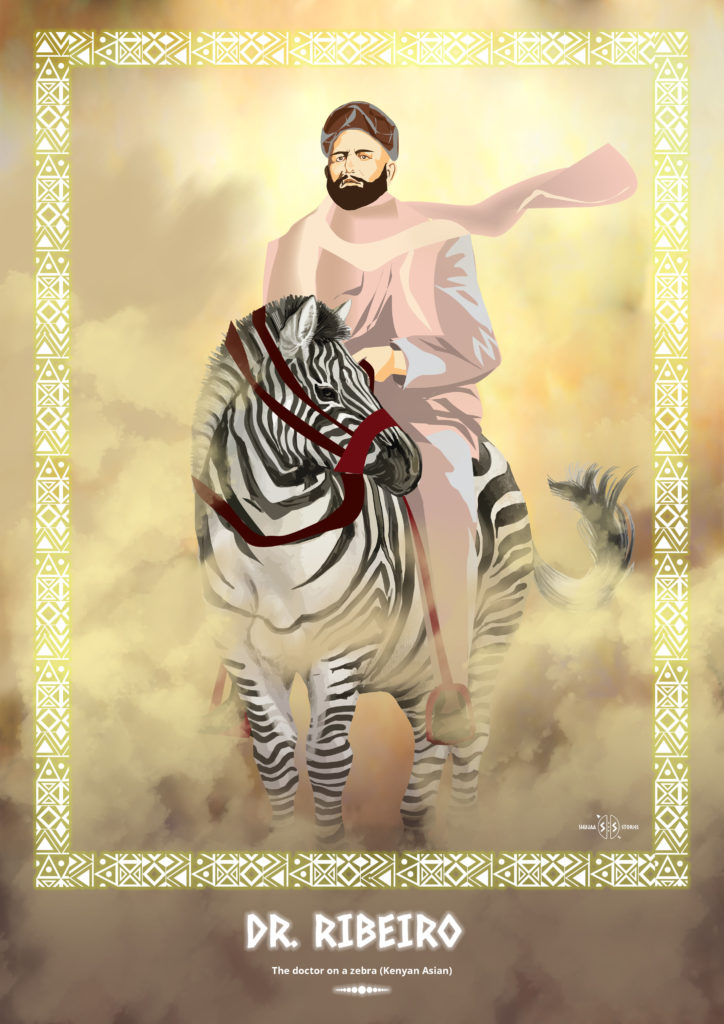Dr. Ribeiro: The Doctor on a Zebra


In February 1900, Dr. Rosendo Ayres Ribeiro arrived at the Mombasa port from Goa. He was one of many settlers from Asia, but also one of few who wasn’t directly affiliated with the construction of the East Africa Railway.
Rosendo had been trained as a physician back home and would come to practice medicine in the British colony. From Mombasa he travelled to Nairobi where he settled and was appointed as the Vice-Consul of Portugal in the growing city.
Around the time of his arrival, many Indians who had settled in Nairobi set up dukas and small shops on the western end of Victoria Street (present day Tom Mboya Street). The road on which the dukas stood was named Bazaar Street (present day Biashara Street), and along this street Dr. Rosendo established his practice – a neatly set up tent where he would treat, diagnose and operate his patients.
Nairobi, a former swampy area, occasionally had cases of malaria, and it was at this Bazaar Street clinic that the doctor invented an anti-malarial drug, one that was patented and sold to an international pharmaceutical firm.
Unlike other businesspeople on Bazaar Street, Dr. Rosendo was more flamboyant in his dress, and in his lifestyle. In fact, history remembers him for his unique means of transport. Every day, he would be spotted riding to work on a zebra-mule, a crossbreed between a zebra and a horse.
Beyond that, he was remembered for another reason – this time tied to infectious disease.
In 1902 something peculiar started happening on the busy Bazaar Street. There were reports of several deaths for which the cause remained unknown and before long, the vibrant street became a horror zone, avoided by most.
Dr. Rosendo was the physician treating cases of people infected with a mysterious disease, and after identifying similar symptoms in two of his patients, he knew that it was a plague. The Bubonic Plague, as it came to be known, affected the businesses along Bazaar Street. After 20 deaths were reported, the street was burned down.
Whether Dr. Rosendo set up another business on the same street after it was rebuilt is not known, but he remained a prominent figure in Nairobi. He was involved in community work and was awarded the Most Excellent Order of the British Empire, an order of chivalry – also known as OBE, and 16 acres of land.
In a bid to integrate Goans into the education system in Kenya, Dr. Rosendo donated a portion of his land for the establishment of Dr. Ribeiro Goan School – the school that later became Parklands Boys School, and then Dr. Ribeiro Parklands School.
He later moved to London where he died in 1951 at the age of 80. Today he is a prominent figure in the colonial history of Kenya, but mostly for his work, professionalism, dedication, and of course, his flamboyance.
#ShujaaStories



